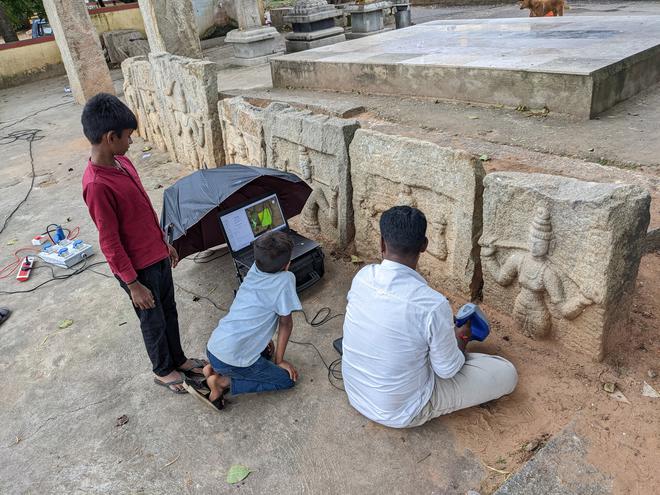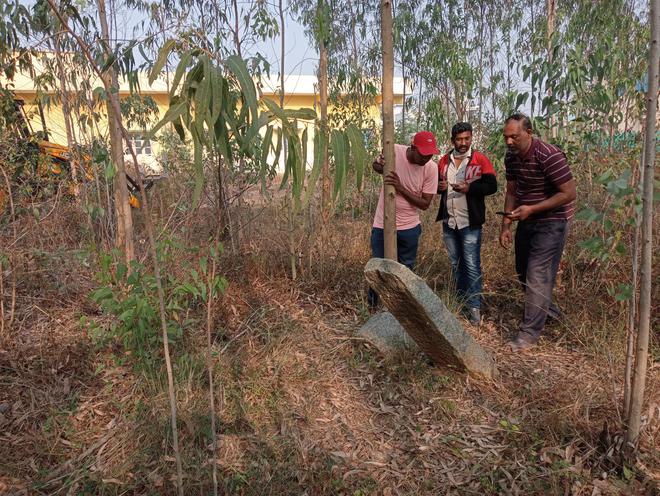While one bemoans the loss of heritage, there is also some exciting news for those interested in Bengaluru’s local history. A project to digitise inscriptions has found 43 hitherto undocumented inscriptions, throwing fresh light on culture and ethos. Of the 43, as many as 22 have been found in Bengaluru while the rest have been identified in Anekal, Hoskote and Magadi taluks surrounding the city.
As many as 22 new Kannada inscriptions and 21 Tamil inscriptions dating from the 8 th century C.E. to 17 th century C.E. have been found by the team implementing The Mythic Society’s Bengaluru Inscriptions 3D Digital Conservation Project that is revisiting about 1,500 inscription locations in Bengaluru, Bengaluru Rural, Bengaluru Urban and Ramanagara districts.

The last time that the inscriptions were chronicled with description was in Epigraphia Carnatica in 1905, which contains about 1,500 inscriptions in the region. Subsequently, location of many other inscriptions have been reported in Mysore Archaeological Reports, and sporadically in other journals as individuals historians, epigraphy enthusiasts and others found new inscriptions. The findings in Bengaluru, a global tech hub now, has been published in The Quarterly Journal of the Mythic Society.
Principal deity of temple
While seven unrecorded inscriptions have been found in the 800-year-old Chokkanathaswamy temple in Domlur, eight Tamil inscriptions of the 13 th and 14 th century C.E. have been found in Champakadhama Swamy temple at Bannerghatta. Though the surface has worn out making it difficult to read the inscription, the high-resolution 3D imaging has revealed that the latter temple was dedicated to Damodara Perumal as the principal deity then, and Puradaraya Tamattalvar was a significant patron of the temple.

In Chikkabanavara, the restoration of a kalyani yielded four of the five undocumented inscriptions. Of the two undocumented inscriptions reported from Venugopalaswamy temple in Yelahanka, one refers to a Kambha built for an Anjaneya temple though there is no Anjaneya temple in the temple complex now. At Kalya in Magadi taluk — a big Jain religious-trade centre in the past, where 18 inscriptions have been reported before — the project identified eight inscriptions documented for the first time.
Belandur lake’s antiquity
Interestingly, the finding of a Durga idol in the precincts of NAL Belur Someshwara temple is a testimony to Belandur lake to be at least 1,300 years old as the worship of Durga beside a lake is a Ganga period practice (5 th to 10 th century C.E.), the journal noted. From the references of two undocumented inscriptions, the Marasuru Madivala village in Anekal has been estimated to be 1,200 years old.
New inscriptions found at Kumbarahalli, near Hesarghatta, recorded in Kannada and Tamil, show that the 10 C.E. Siddeshwara Temple in the nearby Aivarakandapura had received land donations. Inscriptions related to this had been found at Soladevanahalli earlier too. Incidentally, the temple, built in 1034 C.E., is currently dedicated to Gopalakrishna.
“For the first time, locals realised that the temple that they frequent is as old as 1,000 years. They felt excited at finding out the antiquity,” Project Director (Hon) P.L. Udaya Kumar said, adding that in many places awareness was being created about their local heritage.
He also said that with the technology aiding better study of the inscriptions, new reading of the recorded inscription is being given in several cases in the light of new information.







